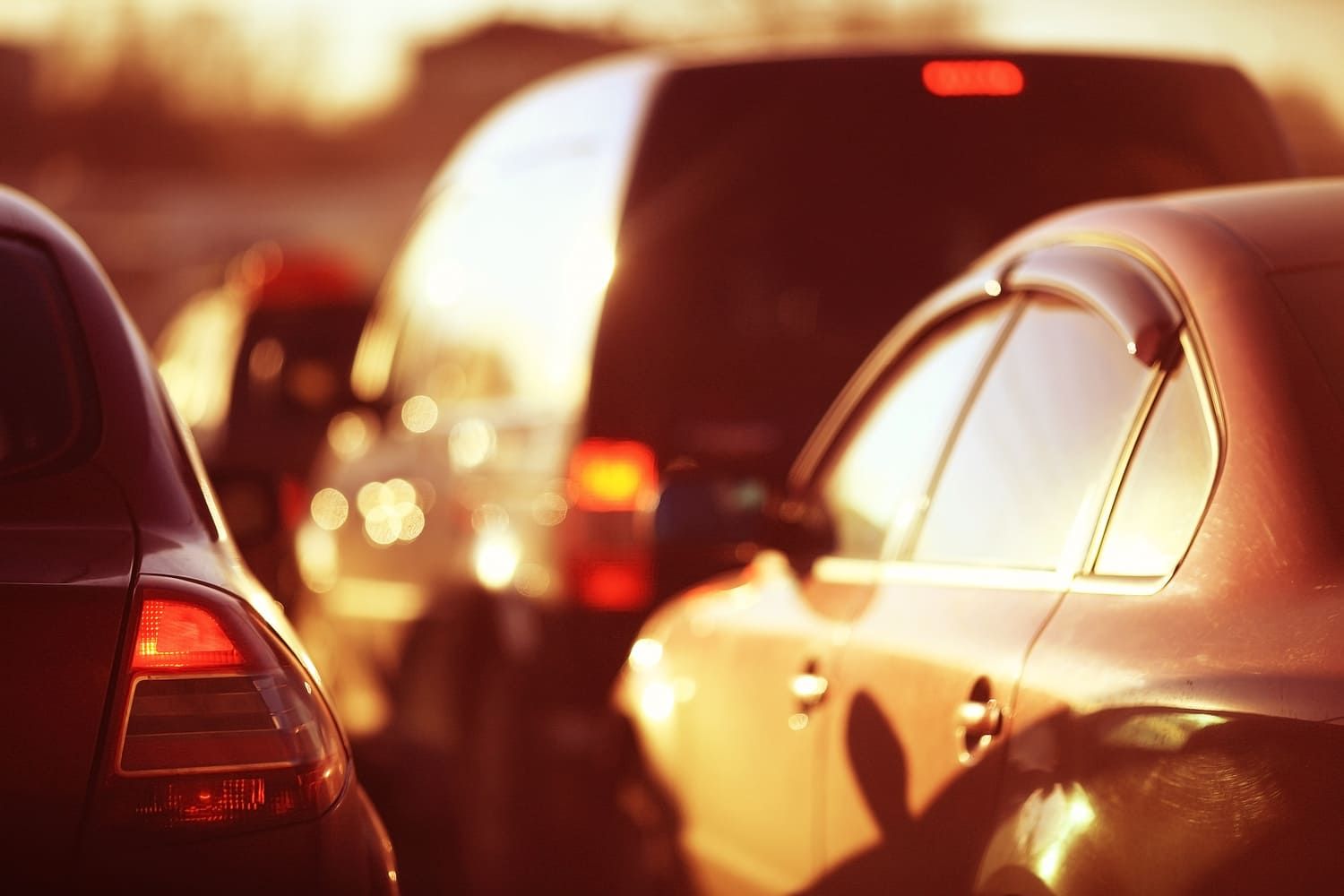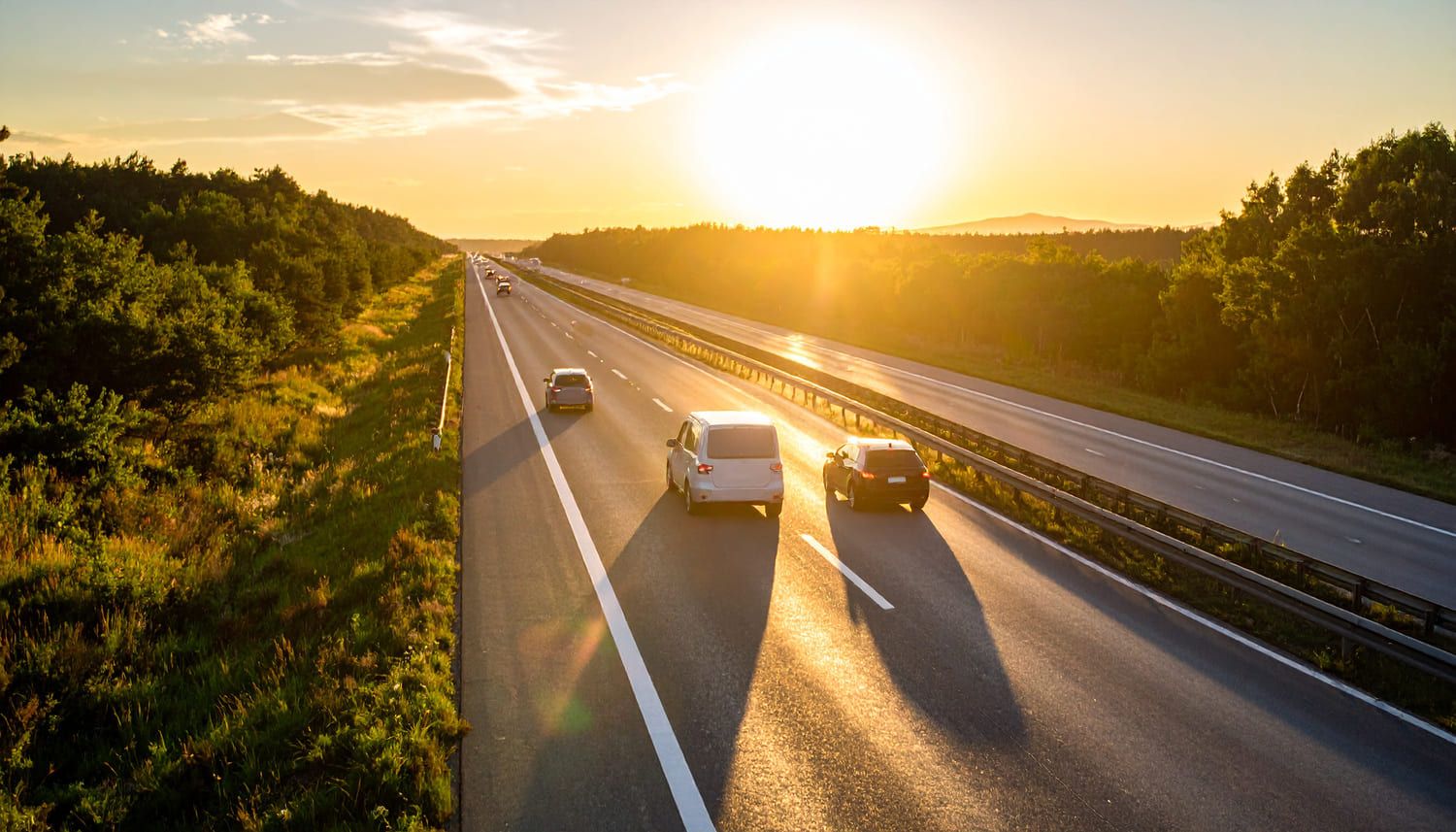>
Blog>
Top 5 tips for driving in a heatwaveTop 5 tips for driving in a heatwave
When the temperature starts to climb in the summer, your car feels it too. Engines overheat. Air cons give up. And let’s not even talk about accidentally touching the metal on your seatbelt.
Whether you're commuting or road-tripping, driving in a UK heatwave takes a bit of prep. Here are 5 tips to make your drive a little bit easier when the temps start rising.
- Park in the shade
- Ventilate before setting off
- Use your air-con smarter
- Use a cooling seat cover
- Keep the tank at least half full
Driving tips for a UK heatwave
Driving in a heatwave can quickly go from uncomfortable to unbearable, unless you know how to keep your car (and yourself) cool.
1. Park in the shade
Parking in the right spot can make a massive difference in a heatwave. Look for shade wherever you can find it: under trees, beside tall buildings – it might even be worth paying to park in a multi-storey car park. Even partial shade keeps your cabin temperature down and protects the interior from UV damage.
No shade around? Make your own! A reflective windscreen cover can knock several degrees off your car’s internal temperature. You can also throw a towel across your steering wheel to stop it from heating up too much.

2. Ventilate before you drive
Open all the doors (or at least the front windows) and let that trapped heat escape for a minute or two. You’ll be surprised by how much cooler it feels straight away. This also gives your air con a better head start. Instead of working overtime, it can kick into action fast and more efficiently, keeping you cooler and allowing for better fuel efficiency when driving in a heatwave.
3. Use your air con smarter
Once it starts to cool, close the window and switch the A/C to ‘Recirculation Mode’. This stops hot outside air from coming in and focuses and cools the air faster, taking less effort from the A/C and saving you fuel. This is especially important if you’re stuck in traffic or on a long drive.
Bonus tip: If your car has a ‘max A/C’ button, use it to blast cool air through your car quickly. Once comfortable, dial it back to normal to stay comfortable without overworking the system.
4. Use a cooling seat cover
Are your car seats made of leather, vinyl or a dark fabric? These can absorb and trap heat especially well. And once they’re hot, they stay hot – not great if you’re driving in a heatwave.
That’s where a cooling seat cover comes in. These handy add-ons reflect heat, improve airflow, and make your seats feel instantly cooler to the touch. Some even plug in and use fans to circulate air around your back and legs. No matter if you have a high-tech ventilated cushion or just a simple breathable mesh cover, they’re a simple, affordable way to make driving in a heatwave much more bearable.
5. Keep your fuel tank at least half full
No one likes seeing the low fuel light, but it’s even more of an issue when driving in a heatwave. When the tank’s nearly empty, the heat can make your fuel evaporate faster, creating vapour and adding pressure on your fuel system. On top of that, your fuel pump needs to stay cool, which it does by sitting in the fuel itself. Less fuel means less cooling, which can make the pump overheat and wear out quicker.
Vehicle checks for driving in a heatwave
Before you go anywhere, give your car a few simple checks to save you from getting stuck later:
- A/C coolant levels: This is your engine’s first line of defence against overheating, so top it up if it’s low. Overheating is a common cause of car breakdowns, but this is one of the easiest ways to prevent it. If it’s taking longer than usual to cool the car, you may just need to regas your car’s aircon.
- Tyre pressure: Hot weather causes the air inside your tyres to expand. This can lead to overinflation, which affects your car’s grip and braking distance, especially on hot tarmac. Check the pressure when they’re cool and replace your tyres if you need to.
- Battery health: Most people think cold weather kills batteries, but heat is the main culprit. High temps speed up internal corrosion in traditional 12V batteries, which can shorten their lifespan, lead to sudden failures and end up with expensive battery repair costs. If your battery’s more than three years old or is slow to start, it’s worth getting it tested.
- Air conditioning: You’ll want this working at full power. Make sure it’s not just blowing hot air or smells musty – this could be a sign that you need to cough up for a potentially expensive air-con repair cost.
- Screenwash: You’ll use a lot more screen cleaner in the summer thanks to bugs, pollen, and dusty roads. A clean windscreen means you can see better, especially when the sun glare is beaming down on you, so make sure the washer bottle is full and the nozzles are clear.
These small checks only take a few minutes but can make a big difference when driving in a heatwave, helping you keep cool and stopping small issues from turning into expensive problems.

Don’t let the heat catch you out with Bumper repair finance
If you’ve been driving in a heatwave and it’s taken a toll on your car, Bumper is here to help with simple car repair finance. Whether it’s a blown tyre, failing air con, or unexpected engine trouble, split the repair cost into easy monthly instalments with 0% interest. Most applications are approved in minutes with a soft credit check, and you can apply online or directly with over 5,000 trusted partner garages. Apply now!
FAQs
What temperature is too hot to drive?
There’s no exact number for when it gets too hot to drive, but when your cabin starts reaching 30°C, that’s when it can get dangerous. Keep a thermometer in your car or check the dashboard reading. If it feels too hot to function, it probably is.
What weather conditions should you not drive in?
If the outside looks like any of the following, it might be best to stay indoors:
- Extreme heat: Can lead to overheating engines, tyre blowouts, and driver fatigue.
- Heavy rain/flooding: Flooded roads can also damage your engine; just 30cm of water can stall most cars.
- Icy/snowy roads: Can make braking and steering harder. Even experienced drivers can struggle with black ice or packed snow.
- High winds: Strong winds can make steering unpredictable, especially if you’re driving a larger vehicle or on exposed roads – there’s also a risk of falling debris and flying objects.
Can you get heatstroke when driving?
You can get heatstroke when driving. And it can happen faster than you think. Long journeys without proper ventilation or staying hydrated can push your body past its limit. Look out for early warning signs like:
- Dizziness or light-headedness
- Rapid heartbeat
- Nausea or confusion
Related Posts